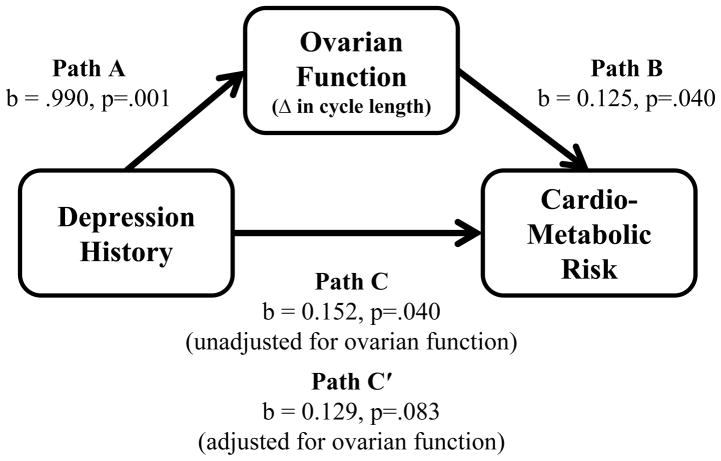Figure 1.
Mediational model depicting the attenuation in the association between depression history and cardio-metabolic risk following adjustment for ovarian function.*
* Depression history was represented by the lifetime history of depression composite score coded having received a depression diagnosis or having used anti-depressant medications (1 = yes, 0 = no); ovarian function was indexed by change in menstrual cycle length coded any change (shorter, longer, or more variable) vs. no change; cardio-metabolic risk was represented by the cardio-metabolic risk composite score reflecting the mean of standardized values of 5 individual risk factors (HDL, triglycerides, waist circumference, glucose, hypertensive status).

